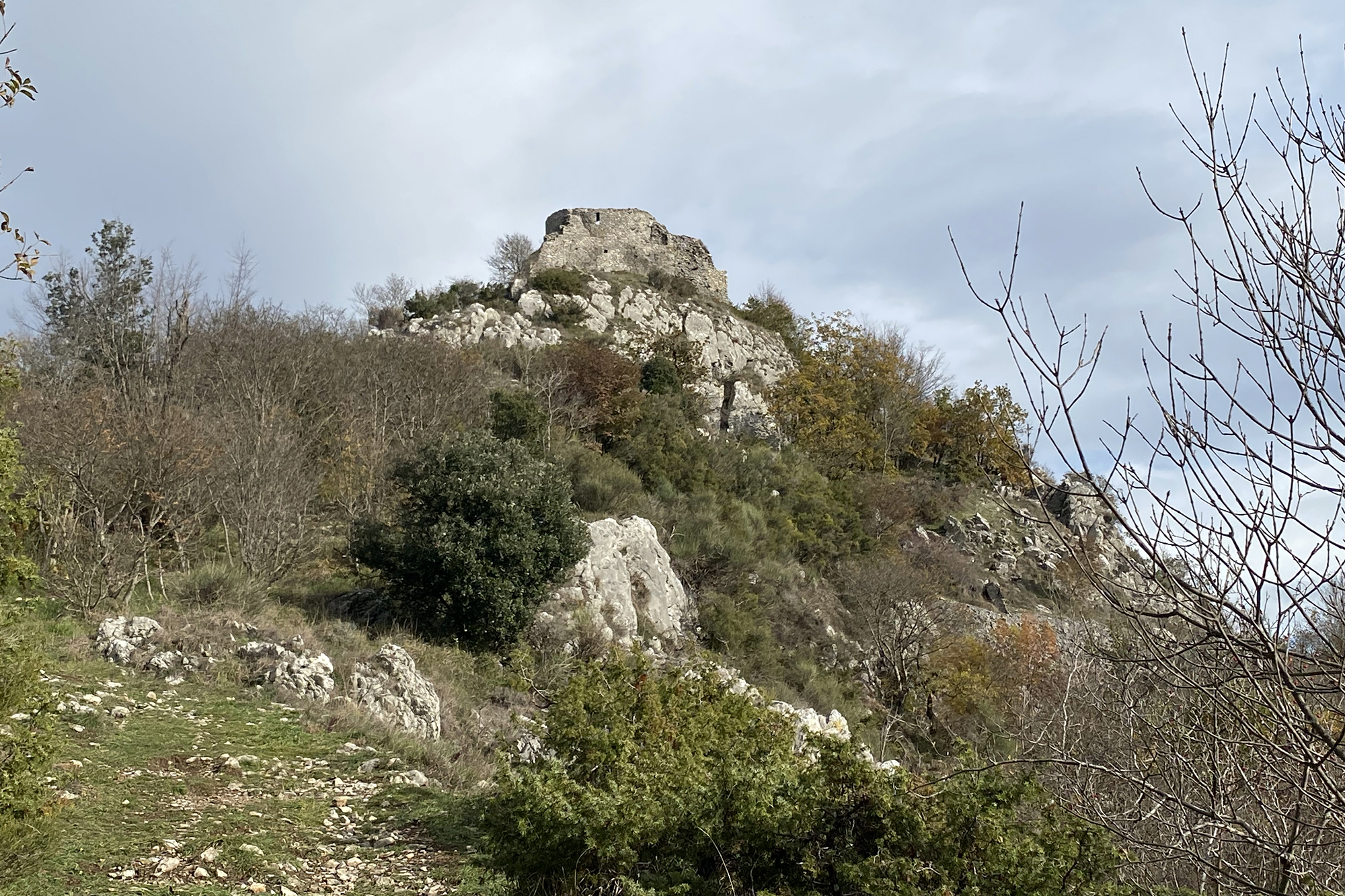
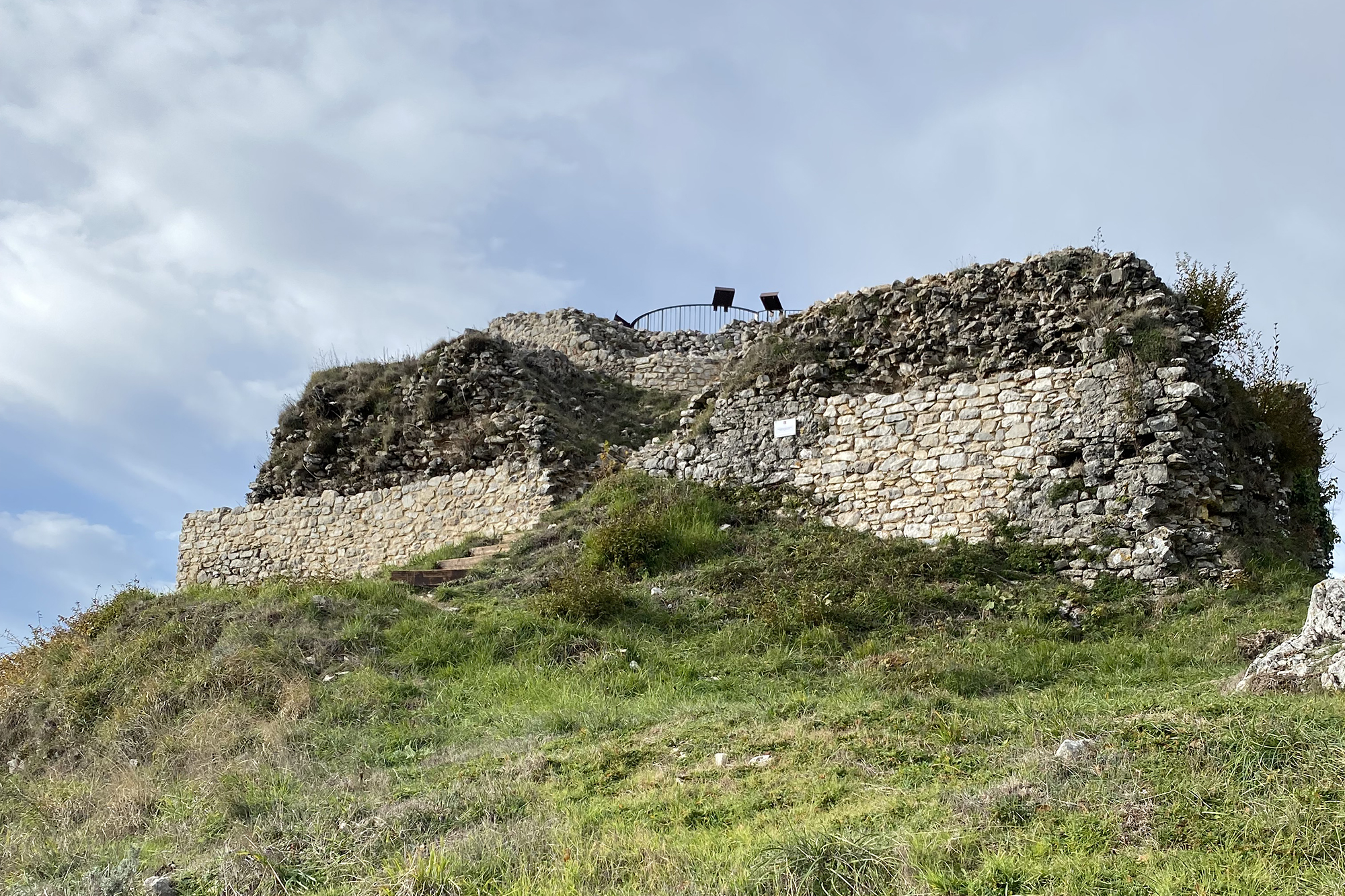
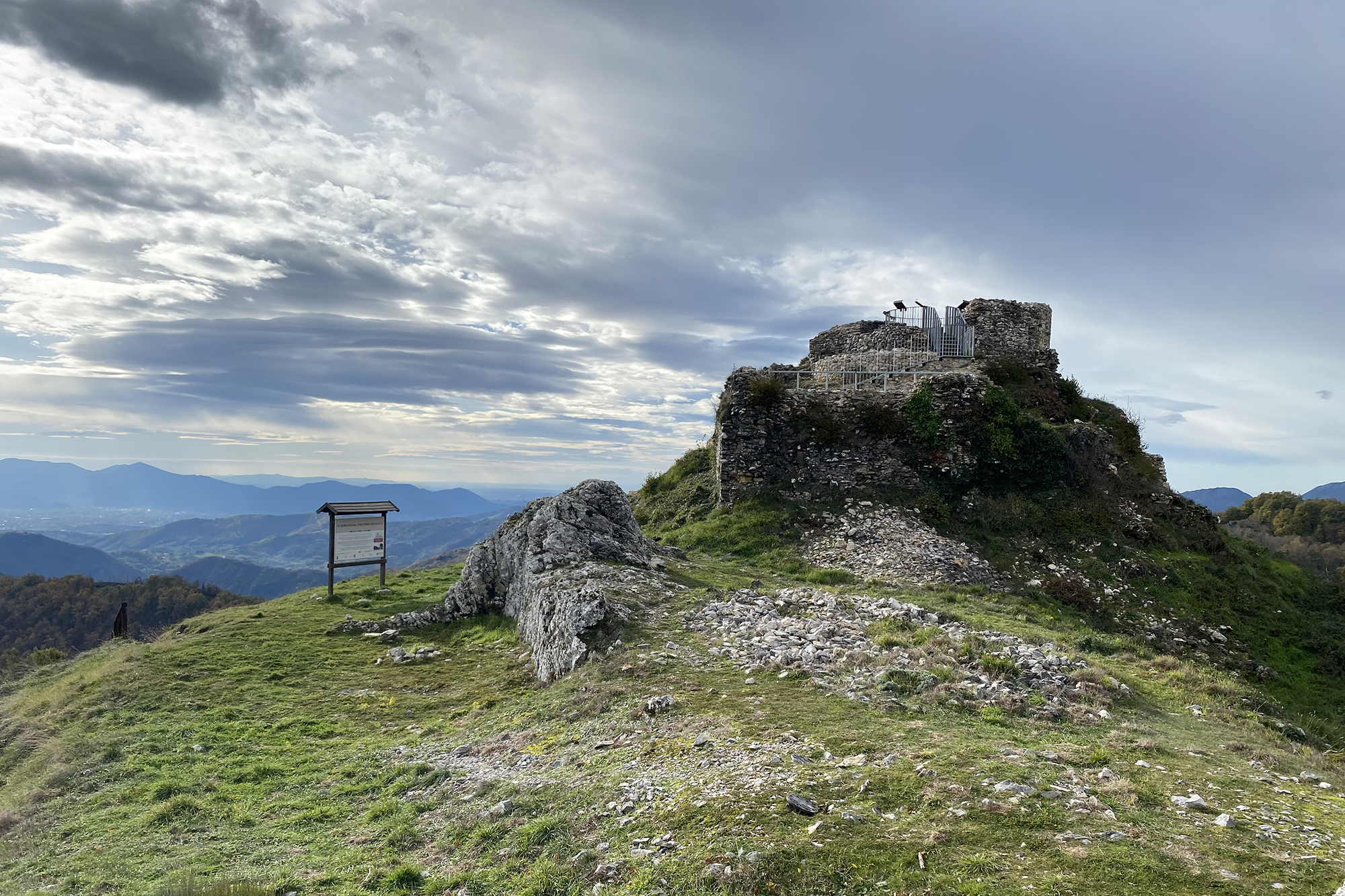
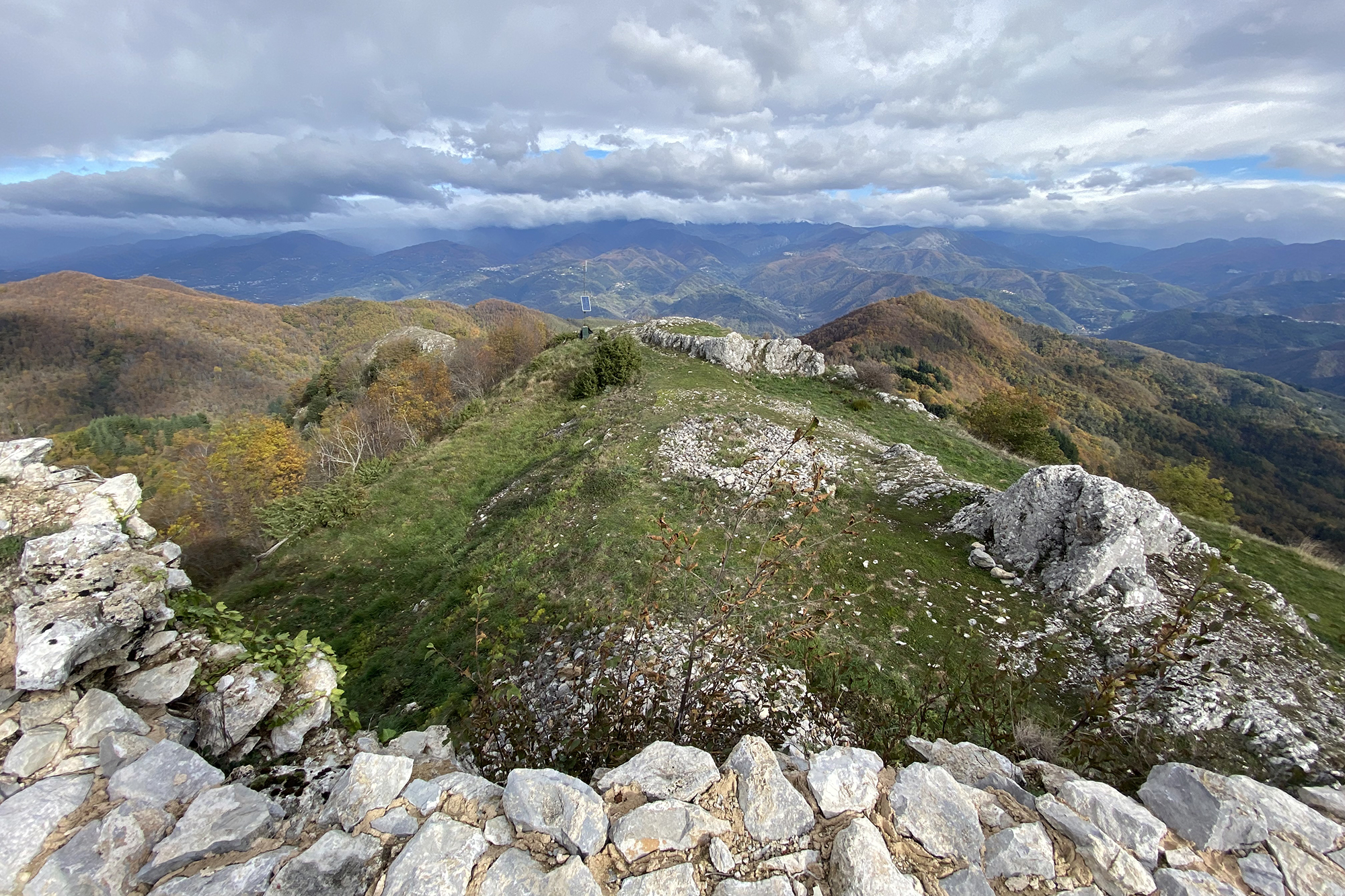
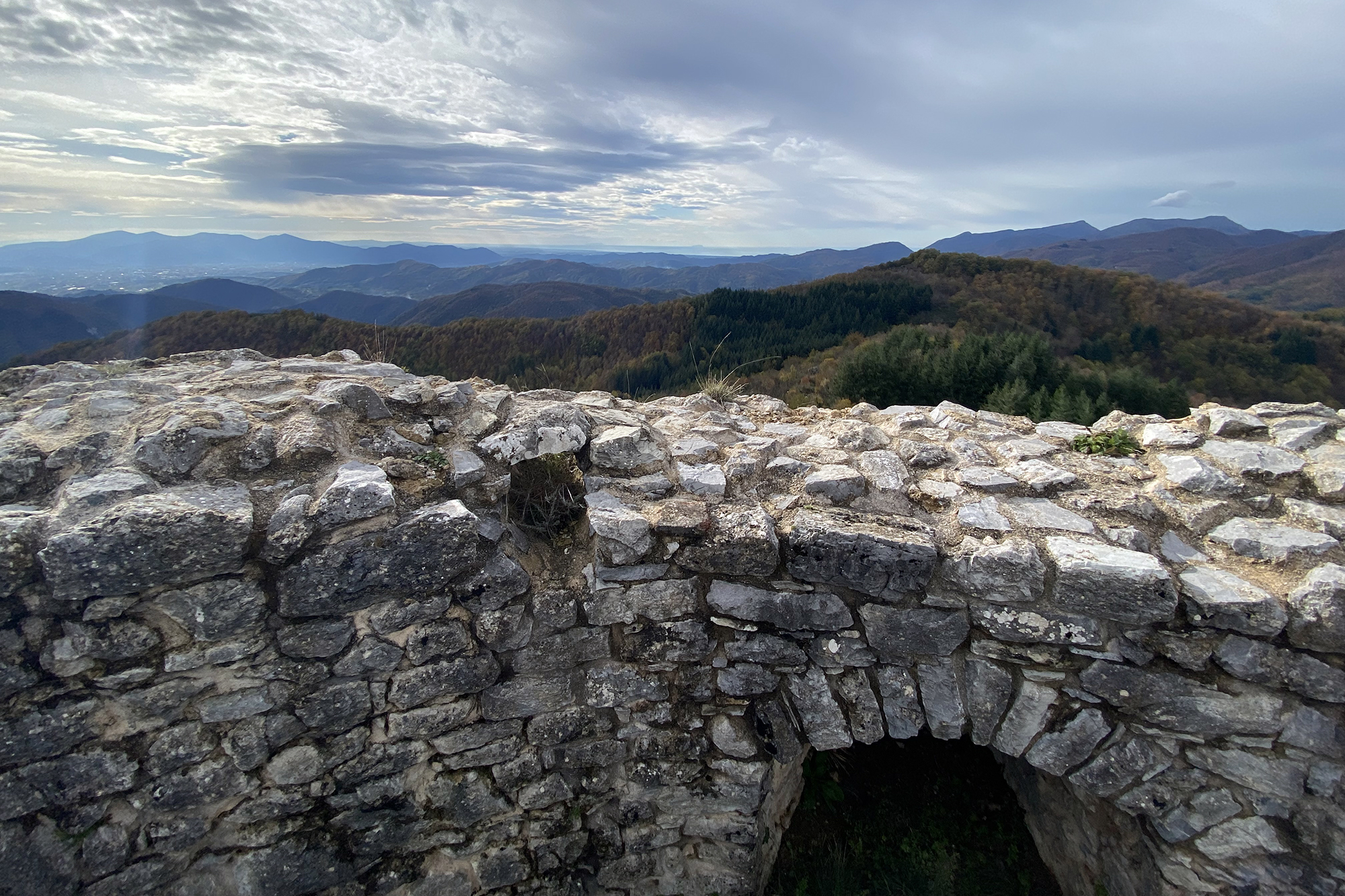
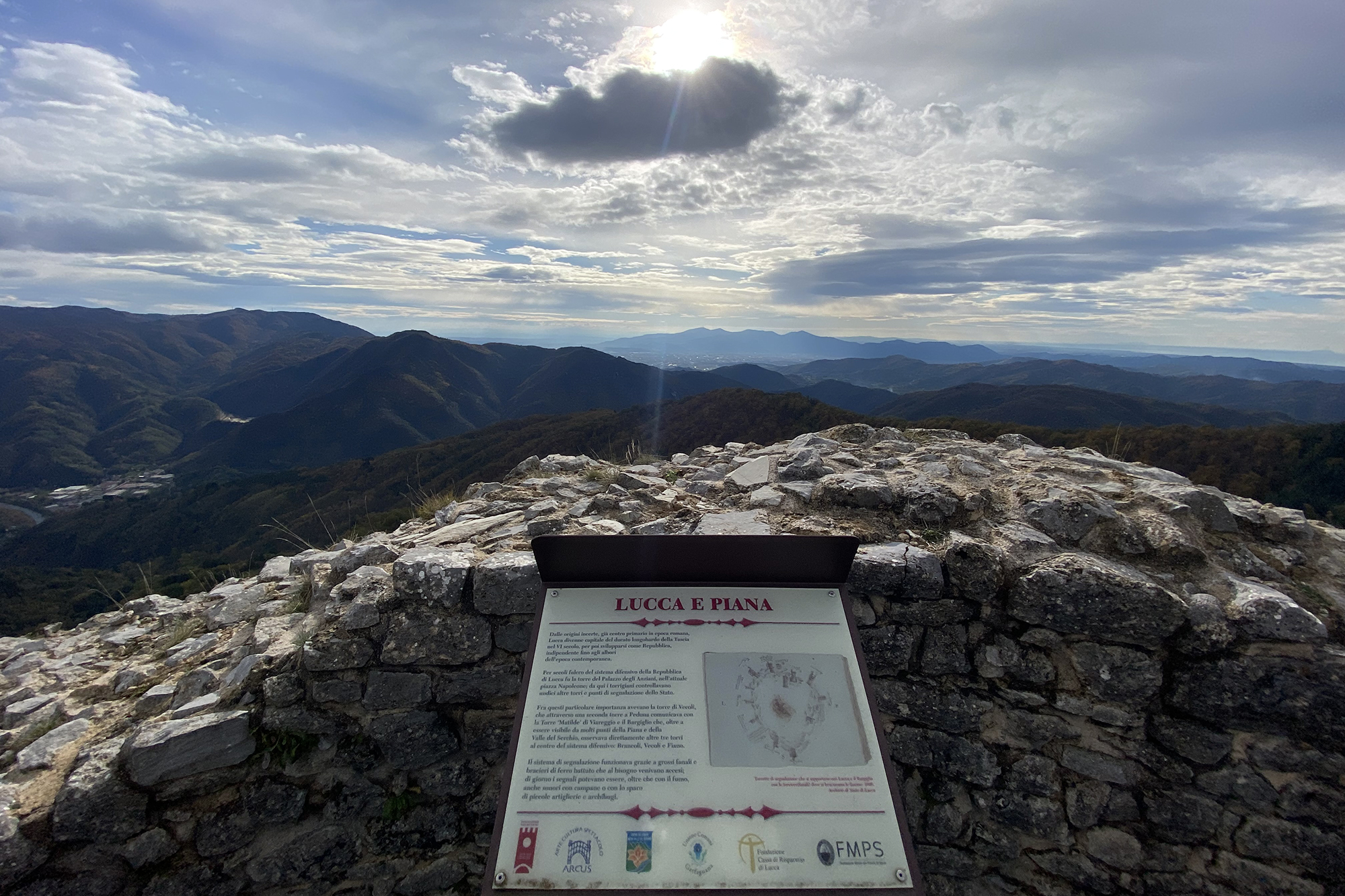
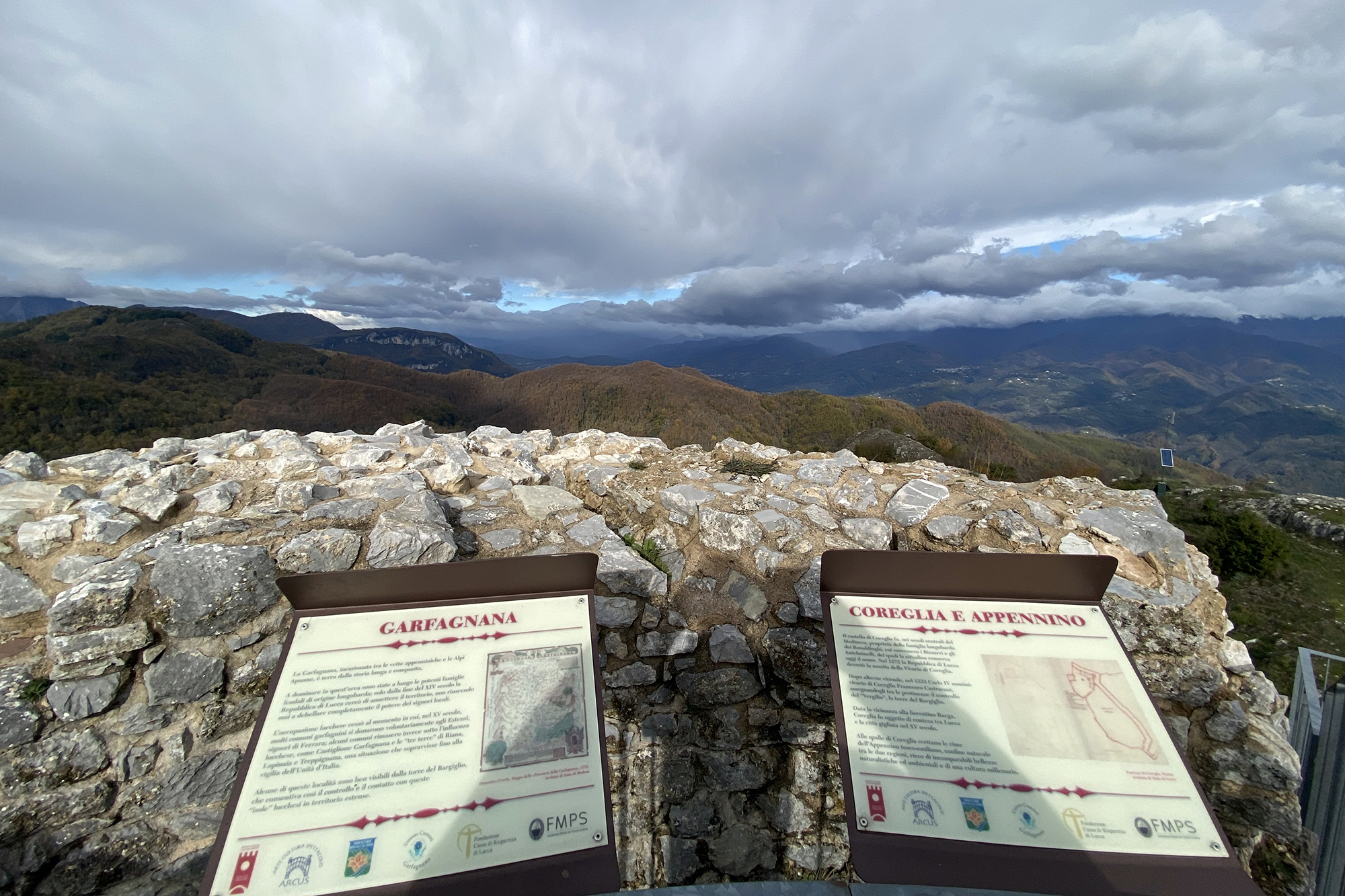
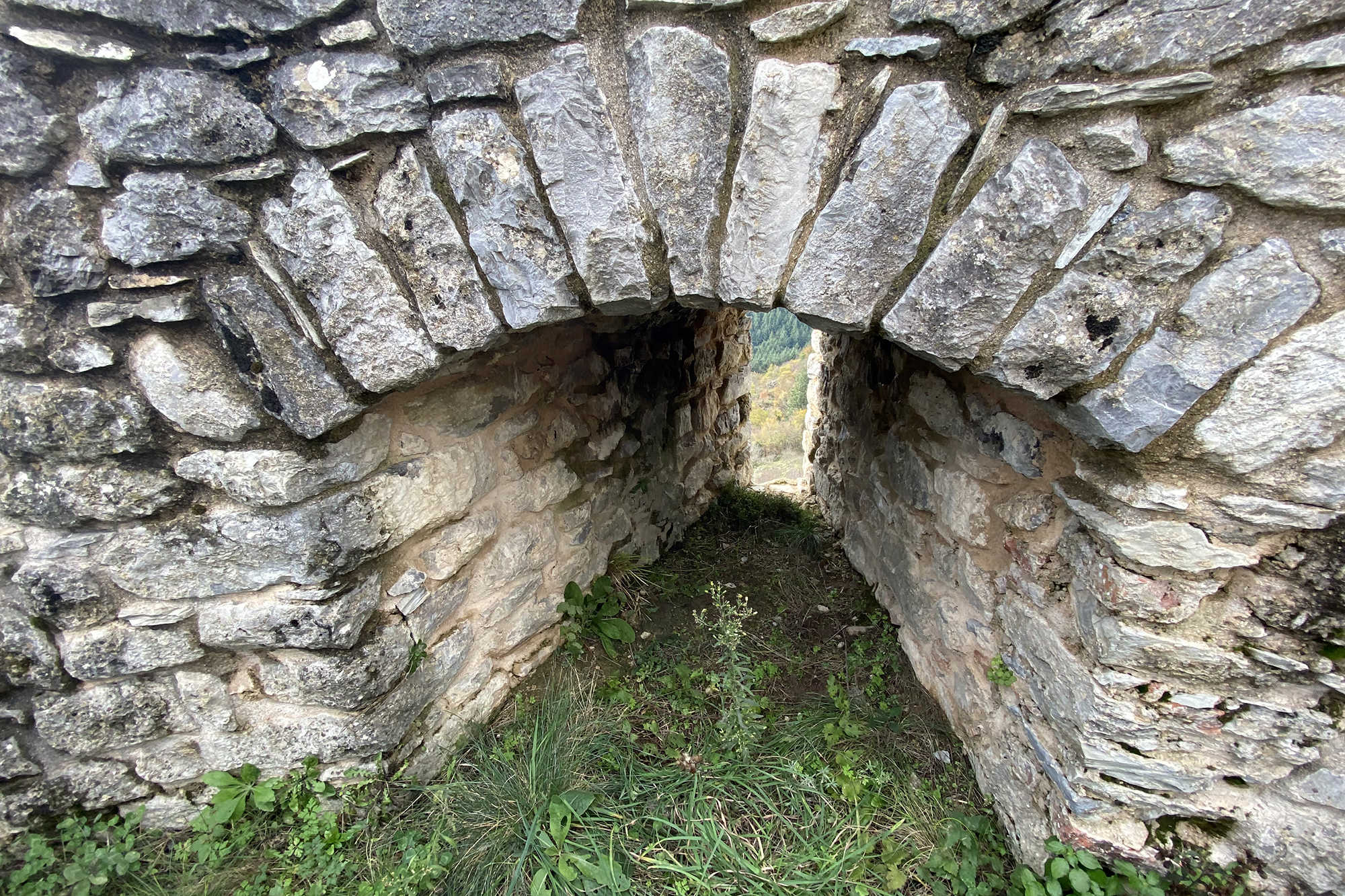
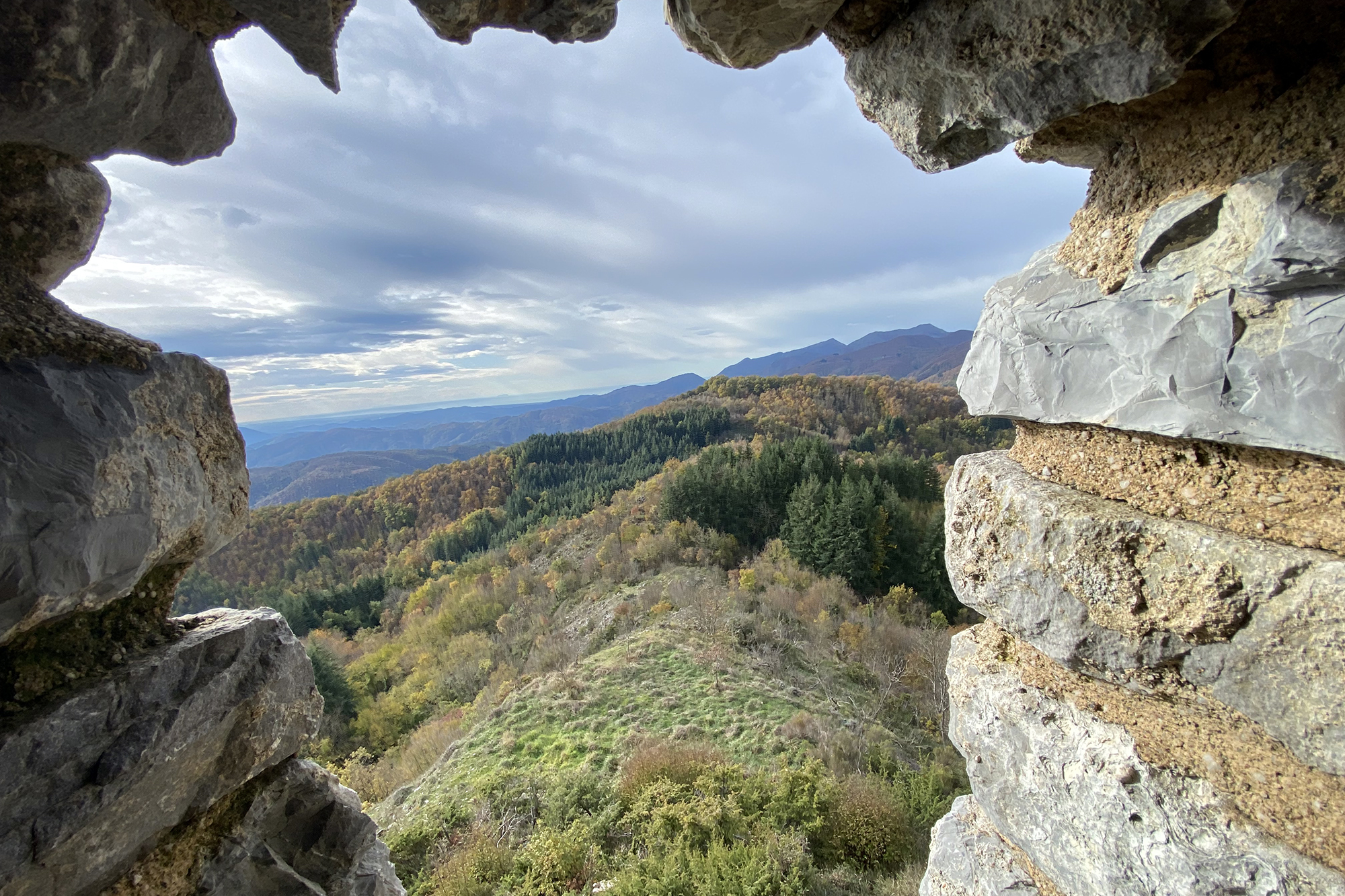
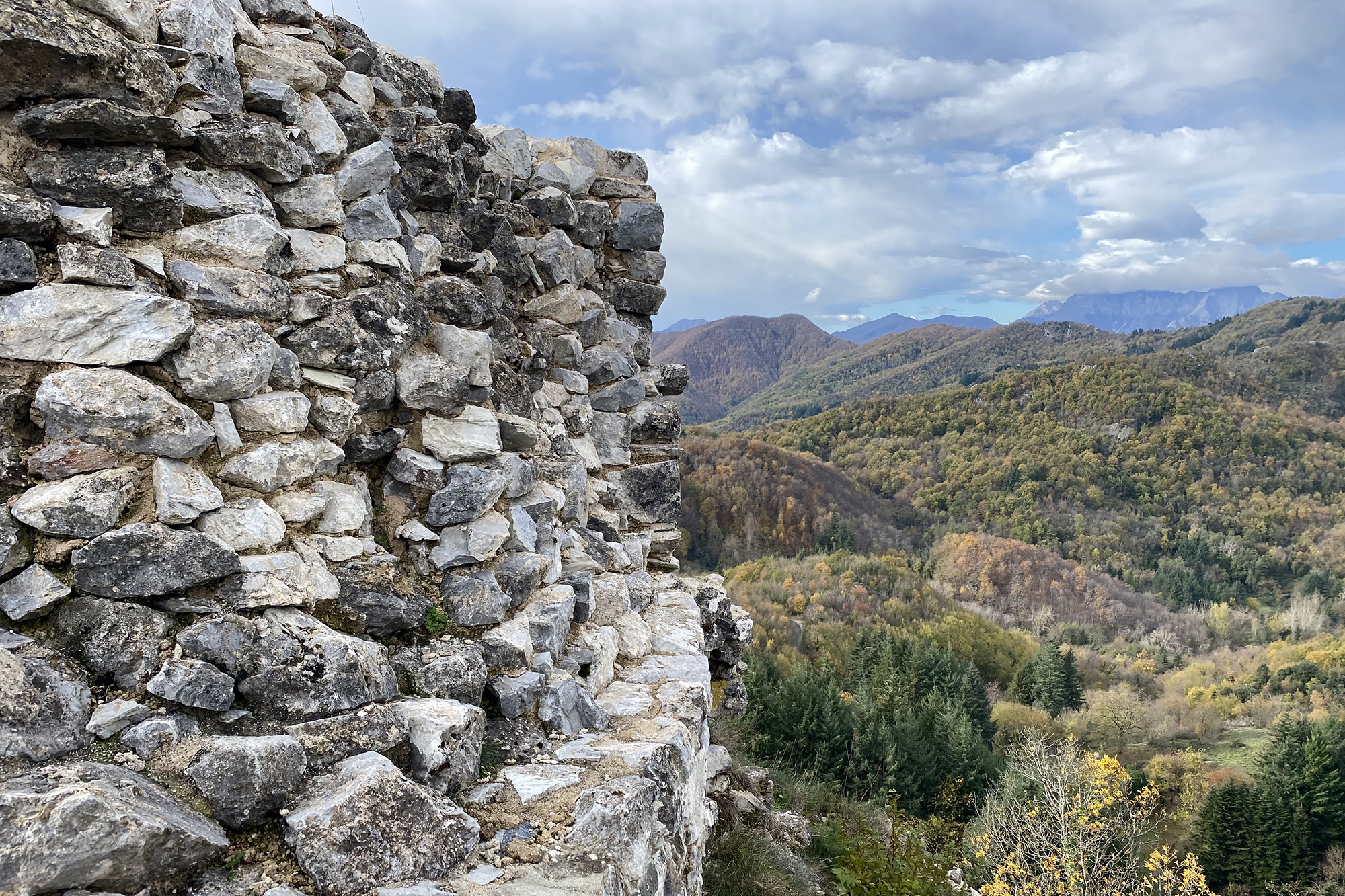
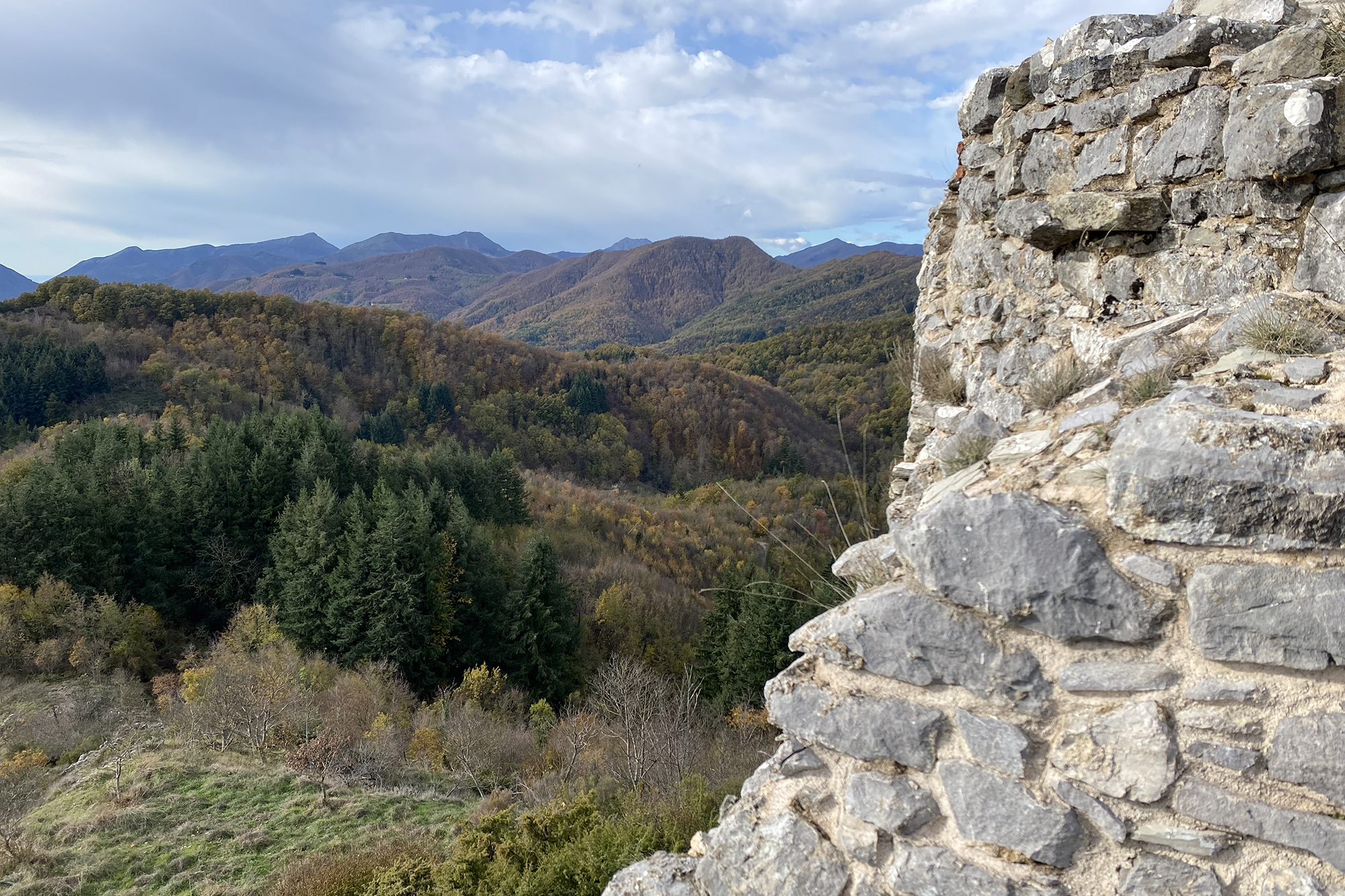
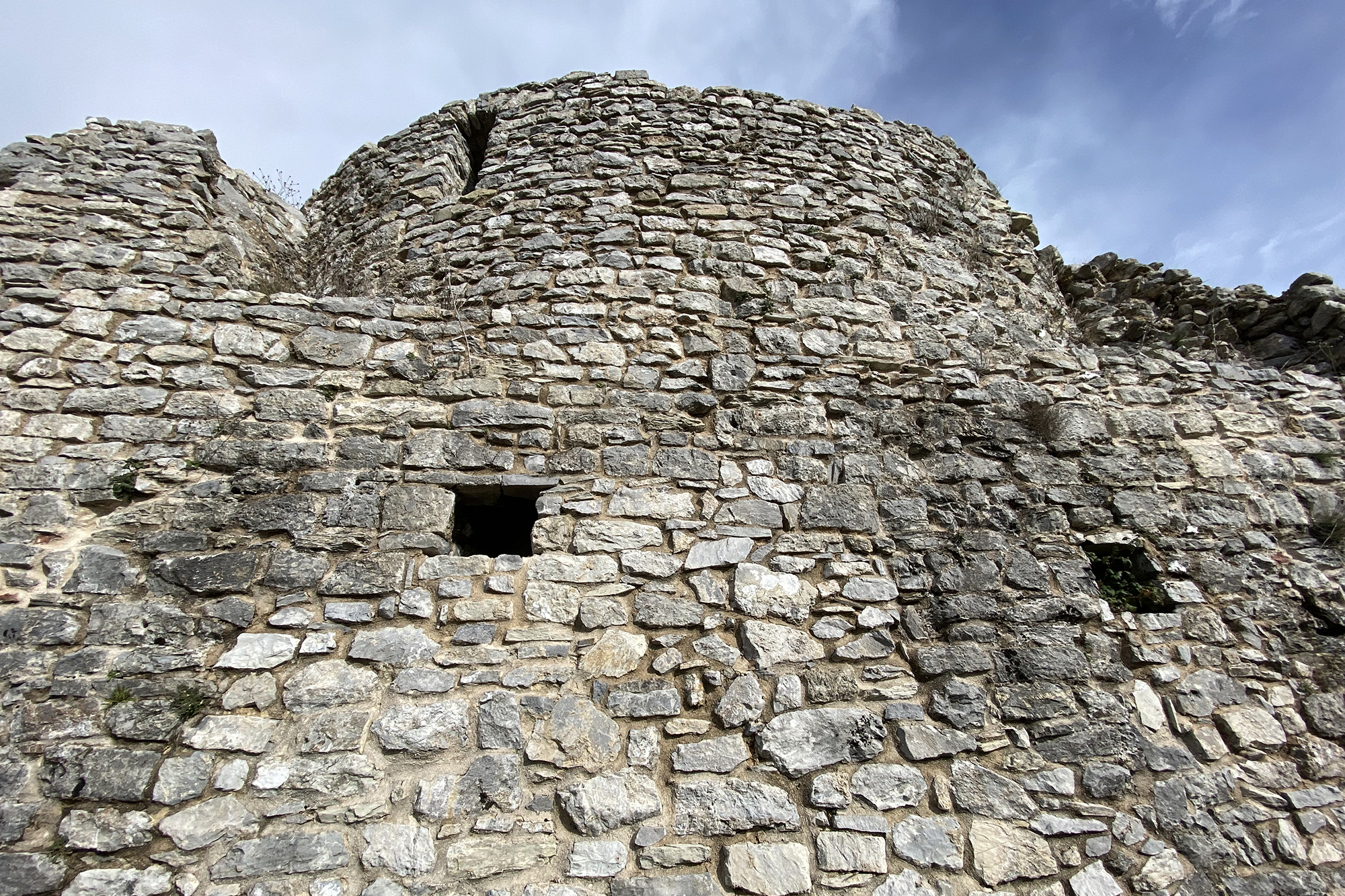
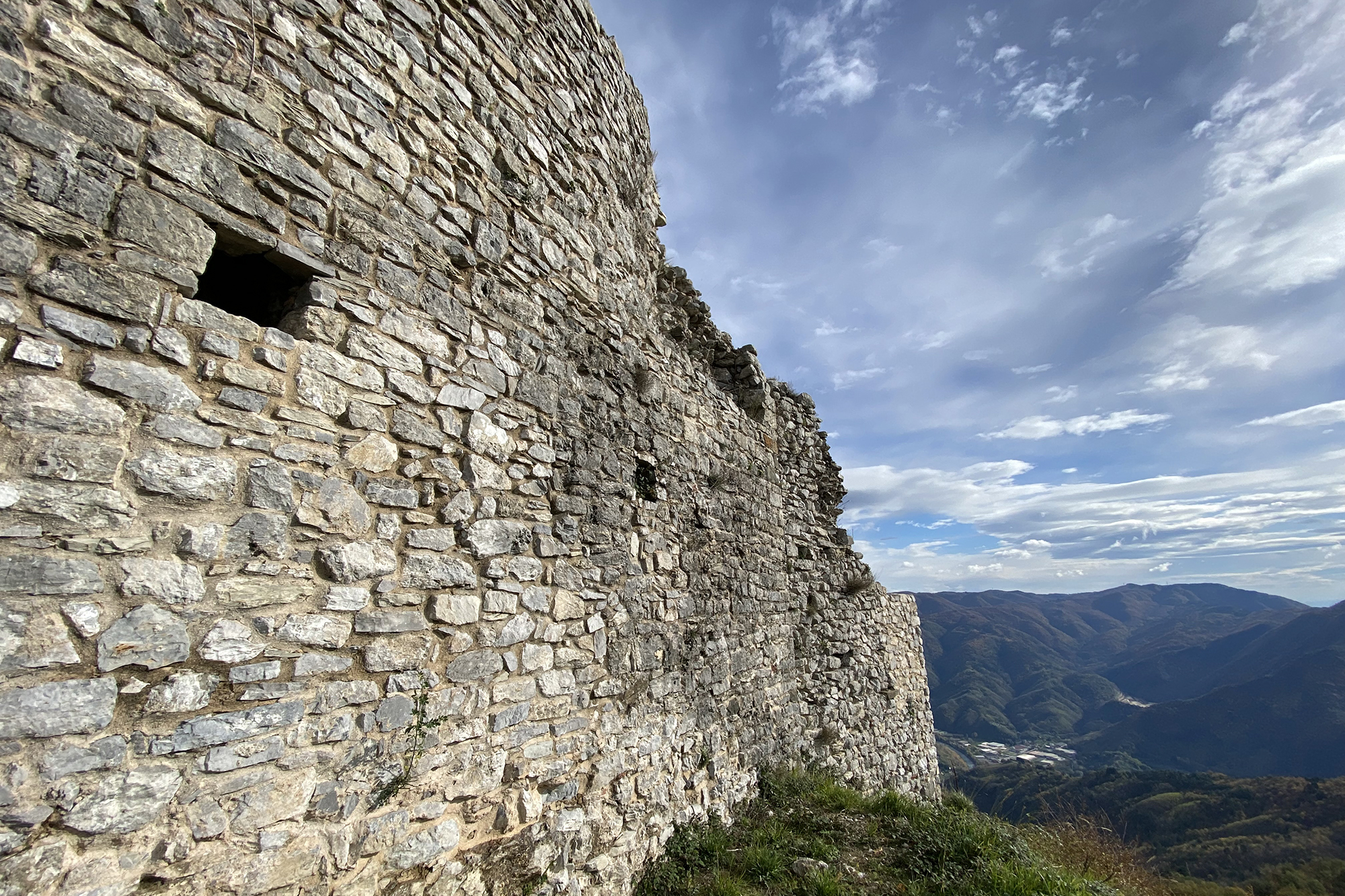
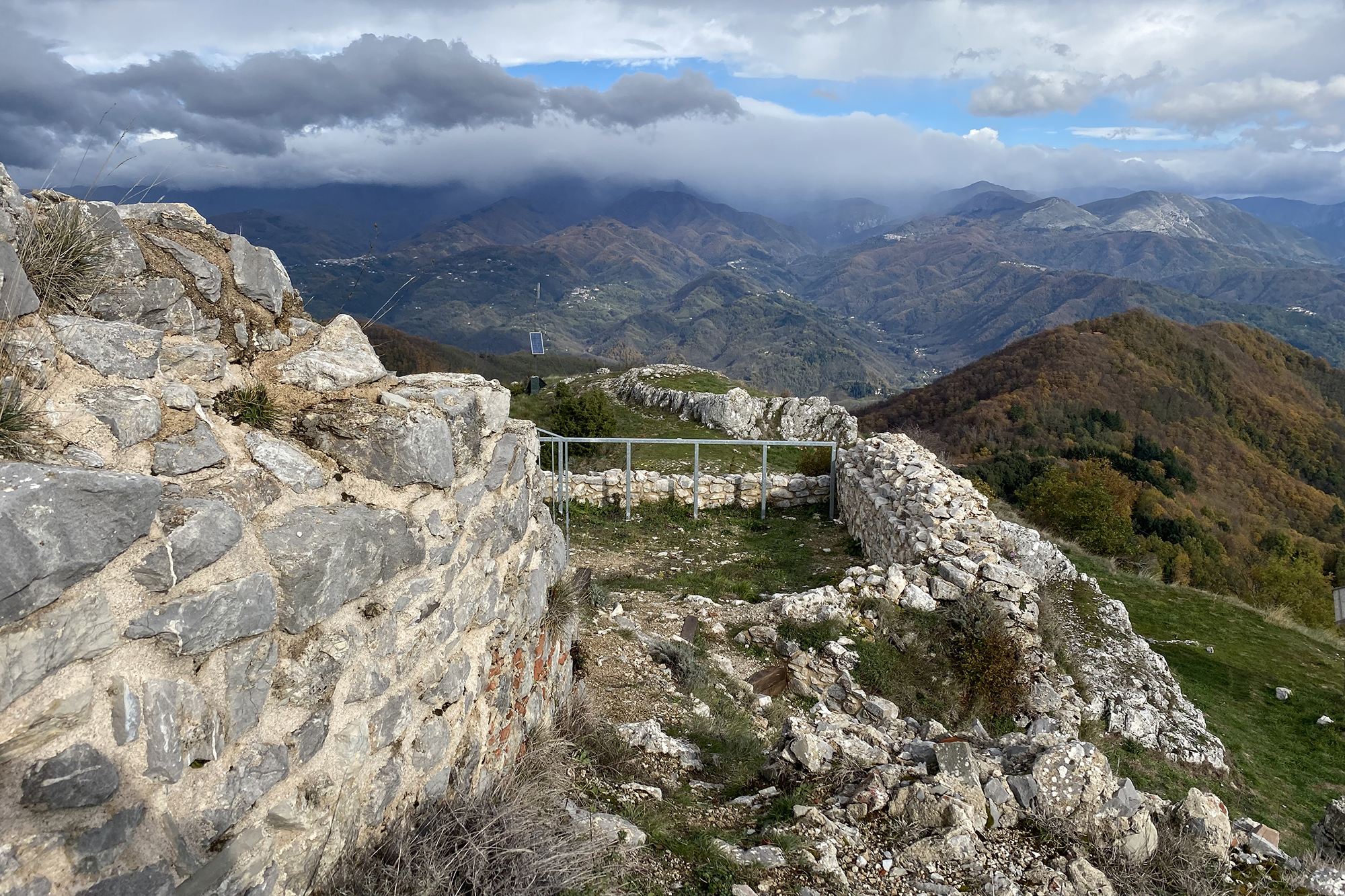
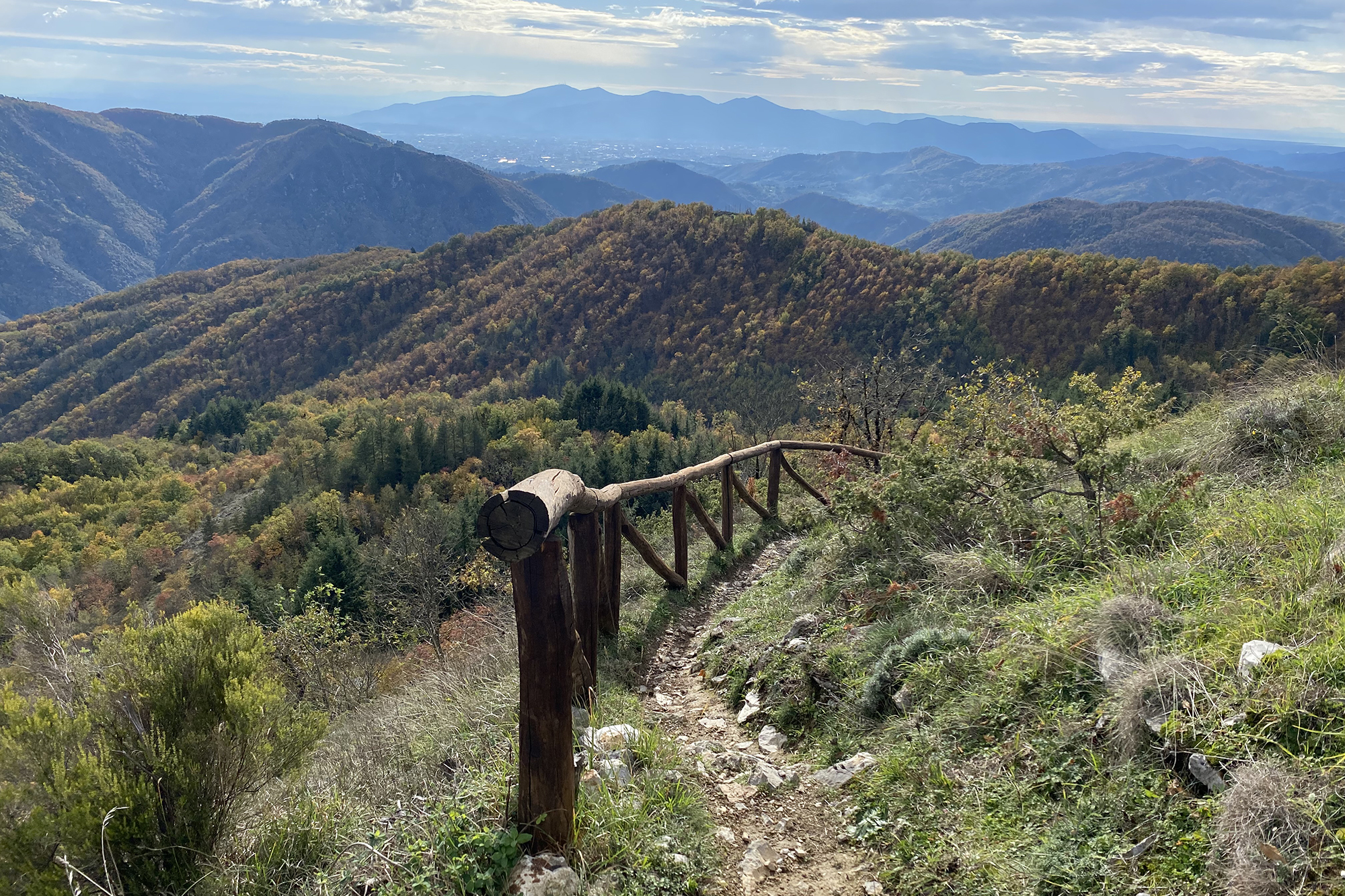















How to reach
Mount Bargiglio is located in the municipality of Borgo a Mozzano, specifically in the hamlet of Cune. Beyond the village is the Oratory of San Bartolomeo and from here, continuing along a beautiful woodland path (indicated), the panoramic peak crowned by the Tower.
History
At an elevation of 866 meters, on top of the mountain with the same name, and at the entrance to the Garfagnana and Media Valle del Serchio, are the remnants of the Tower, or Rocca, of Bargiglio.
When you get here, it becomes obvious why it has always been referred to as the "Eye of Lucca": the 360-degree panorama view provides a perfect view of everything from the many castles and fortresses of the Garfagnana, including the Castle of Castiglione and the Fortress of Mont'Alfonso, to the summits of the Apuan Alps, with the Pania di Corfino clearly visible. From here, you can also command the entire Serchio Valley, including Bagni di Lucca and the other towns, as well as the walls of Barga and Coreglia Antelminelli.
The fortification was presumably built at an unknown time by the Suffredinghi, one of the three Longobard potentates who ruled over the Serchio Valley and were notable for their tenacious resistance to the expansionism of the Commune of Lucca. It was made up of just one tower, which served as a point of observation and control over the extensive area, the road that went a little farther down, and the little neighborhood that lived in the hamlets surrounding the fortification and the ancient Romitorio di S. Bartolomeo.
Excavation campaigns conducted by the University of L'Aquila between 2003 and 2004 brought to light part of the wall structures buried by vegetation and collapsed. At least three building phases in which the fortress was formed have emerged. The rock outcrops and the steep rises on the plateau suggested that it had already been frequented by humans. We found sections of walls from the Middle Ages of the original tower, which had a quadrangular base.
Until the arrival of the Castruccio Castracani, its principal function, but certainly not the only one, remained that of a signal tower. Visual signals, by placing straw or other combustibles in metal baskets placed on the top of the tower (smoke by day and fire by night), as well as in later centuries, gun or artillery shots, reached as far as the Tower of the Palazzo Pubblico of Lucca, which stood in the western part of today's Piazza Napoleone, the fulcrum of the city's sighting system and a fundamental means of communication during the period of wars between local lords.
However, the Bargiglio Tower is mentioned officially for the first time only in a document dated 1339, which testifies to a victorious siege by the troops of Francesco Castracani and is described as a castle with a quadrangular base equipped with a tower and not as a simple isolated tower. Years later, his descendants, after having sold it to the Republic of Lucca, improperly re-appropriated the fortress, using it as a base for their raids. The castle was then recaptured by the armies of Lucca, and the Elders of the Republic decided to destroy it to prevent other rebels from taking it over (c. 1372).
The fortress was reconstructed only in 1468 following a resolution of the General Council of Lucca. The surviving masonry was leveled, and a fortification was erected on top of it, consisting of two distinct buildings erected in two phases, recognisable in the tower and the keep that incorporates it. The tower had a wooden floor, recognisable by the sequence of circular holes in the masonry. A low arched window remains visible today, which originally allowed a view of the castle of Castiglione Garfagnana. The tower was followed, perhaps in the mid-16th century, by the construction of the keep that enclosed the windows to the east and north; later, the base of the tower was equipped with some external scarped walls, and the cistern well was built that ensured a water supply for the soldiers who lived there.
The advent of gunpowder changed the defensive strategy of the Republic of Lucca, and only the most important towers were maintained and reinforced. In 1584, works to consolidate the Bargiglio were entrusted to Vincenzo Civitali. Until the Second War of Garfagnana ended in 1618, the tower was kept in operation. Thereafter, it suffered a slow decay. In 1801, the Bargiglio garrison was definitively discharged, resulting in the abandonment and degradation of the entire complex. The advent of Napoleon in 1805 rendered it almost useless, and it slowly collapsed.
In 2016, it underwent a major conservative restoration of the masonry, during which a metal platform was also inserted into the remains of the tower to allow everyone to admire the panorama that stretches from the Plain of Lucca to the sea. And if there were still any doubts, understand why this tower has always been known as the Eye of Lucca!